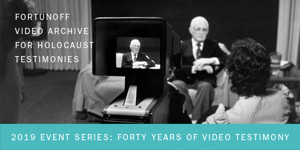Home movies are made for home. Most of us would never think to show ours in public. But the silent flickering of family weddings, birthdays, vacations, baseball games and parades on the screen at the New Haven Museum last Saturday was a testament to their public value. Their indispensability, even.
It was Home Movie Day. A small audience had come to watch, not to relive their own memories, but to be enraptured by the clothes, the cars, the recognizable landmarks caught in a pan shot. Unfamiliar faces smiled into the camera, acting familiarly in the context of their own life among familiars. Who were they? How did they see themselves? If this was 1957 or 1927, are they still alive? What about the person operating the camera?
sponsored by
The host, Brian Meacham, manages the archive at the Yale Film Study Center, and he had placed 25 home movies from the Center’s collection on a hard drive, to be projected at random in three-minute segments. Many came from donors who initially assumed they wouldn’t hold any archival value. Meacham relates an example: “We had a donor of his father’s collection of feature films and short films and commercially made films, and I just sort of happened to ask, ‘Well, do you have anything else?’ He said, ‘Well, you know, we have our family home movies, but no one would be interested in those.’ And of course, I said, ‘No, we’re very interested in those. In fact, if anything, we’re more interested in those than another print of a Hitchcock film.’ So he brought in boxes and boxes of home movies. Trips through the National Parks of the southwest and west. Very well shot film that documents the second summer that Disneyland was ever open.”
That Disneyland vacation made it into this year’s Home Movie Day mix, projected in glorious 16mm color. Animatronic hippos surface in crisp, steady close-up. (You could make out the verisimilitude of their snouts.) The vacation proceeds from Anaheim up the California coast and a moviemaking sensibility emerges. Title cards. Patient cuts to pure landscape. Maybe even a little direction as a boy jumps a tidal stream in a direct line toward the camera.
sponsored by
Home movies have a reputation for messiness, but home movies on film made filmmakers in a way that digital video generally doesn’t. The material limitations of the medium forced, then invited, production. A fisheye lens might be attached. A strip might be reverse-spliced so wine appears to pour from the glass back into the bottle. Pretty soon, family members are being handed scripts. Indeed, the Yale home movie archive contains an early 20th-century adaptation of the novel The History of Tom Jones, a Foundling (36 years before Albert Finney became cinematically synonymous with the title character) and a noirish 1931 crime short In the Leprous Hands Of Lust. “The ones that are the most memorable to me were actually the ones by kids who… were really inspired by horror films,” Meacham says. “Of course the little brother would always be the victim with ketchup coming off of his neck. And they would throw a body off a bridge that would be jeans filled with hay.”
Home Movie Day is both international, with screenings taking place as far away as Tokyo, and richly local, offering New Haveners glimpses of New Haven history. But Home Movie Day is more crucially an invitation to bring and watch our own home movies. Because as little as it occurs to us to show them to others, we just as infrequently get around to viewing them ourselves. The old family projector breaks down or disappears. The reels get put in a box. They rattle like bones whenever the box is moved.
A gentleman arrived with Super 8 footage of his daughter, calculating that he hadn’t seen it in 30 years. At the inspection station, Andrea McCarty, audio visual project manager at Yale, explained that she would first check his film for damage—shrinkage from storage in excessive heat, rips in the sprockets, missing leader tape, splices over which the splicing tape had worn out. The last two diagnoses could be dealt with on the spot. McCarty had a reel full of leader and a pocket-sized splicer, which she says is usually all she needs, adding, “I’ve been working with home movies for a long time. And a lot of times, unless somebody had a bad projector back in the day that ate the film, this stuff is usually in remarkably good shape.” She set the gentleman’s reel on one spindle, then threaded it to a second reel on its own spindle. She then hand-cranked the second spindle slowly, watching as the film passed under her spotlight.
When it was declared safe for projection and threaded into the Super 8 projector, the film suddenly transcended its physical form and became a memory. A 2-year-old girl is gently led to a birthday cake. Several cuts later, she is guided down the stairs to a Christmas tree. The cut from that moment to the girl’s uncertain grasping of a wrapped toy would have been a matter of turning the camera off and then back on. A single reel of Super 8 gave you 3 minutes of film, McCarty says, “and you had to…put a little thought into it. You didn’t just want to turn the camera on and leave it running the way that people did with video.” The shortness and sweetness of the little girl’s birthday on film are what make it precious. Filling out the reel, her birthdays and Christmases had been spliced together so we could watch her grow from age 2 to 6 in less than 30 minutes.
On the website for the Center for Home Movies, which debuted Home Movie Day in 2003, quotations from eminences in cinema extol the importance of the event. Martin Scorsese reminds you that the Zapruder footage of Kennedy’s assassination is part of a home movie, and look how important that is. Which is a little like saying you should revive your old metal detection hobby because then you might dig up D. B. Cooper’s briefcase. But Meacham points out that home movies are indeed a valuable window on historical events, which explains the urgency behind the Center’s annual invitation to people to rummage through their closets. Home Movie Day, Meacham says, was a way for film archivists to “elevate home movies to what they thought their rightful position in the canon should be, which is as invaluable as documents of history and culture and as insights into daily life as you’re going to get in commercial, produced films.”
In the final 15 minutes of the two-hour presentation, McCarty brought out 8mm home movies she had found at a flea market. She had already explained the difference between Super 8 (introduced in 1965) and regular, mild-mannered 8, which has to do with the distribution of sprocket and frame on the strip itself. By decreasing the size of the sprocket, she said, Kodak was able to make the resulting picture bigger. The older format was abandoned to older projectors, one of which audiovisual technician Ethan Gates had set up for the occasion. The uptake reel motor had stopped working, so Gates had to turn the back reel by hand—slowly—as the movie played.
In it, a family cavorts about the kitchen of a vacation cottage on Ossipee Lake. McCarty could tell us it was Ossipee only because the reel had been labeled as such. Other specifics can generally be harvested from attentive viewing, which is another way Home Video Day benefits from the audiences it attracts. The Ossipean family is acting—maybe play-acting—in a way they could have easily explained to their audience later. Or shared among their older selves. They’re suited up in unabashedly matching red sportsman’s plaids. One holds up what may be a can of vegetables in mock or genuine triumph. It’s mysterious, but weirdly recognizable, and all the more riveting for it.
Written and photographed by David Zukowski.










